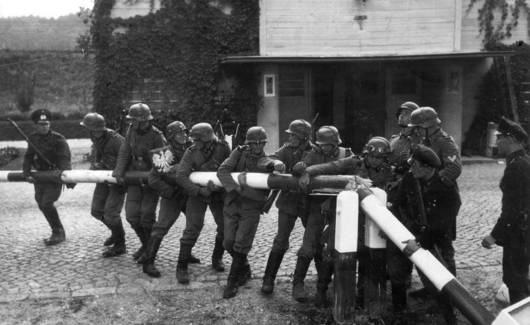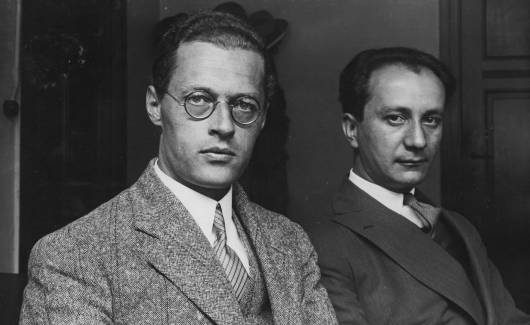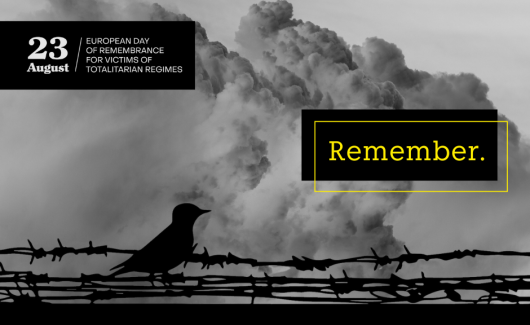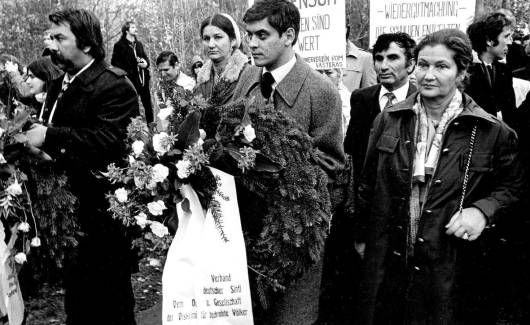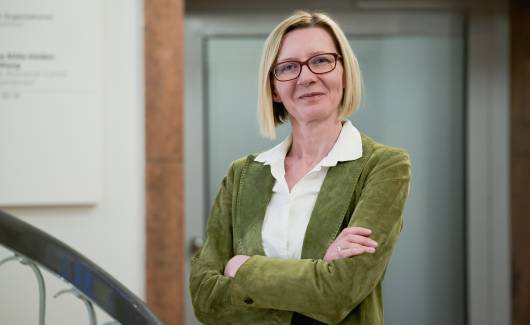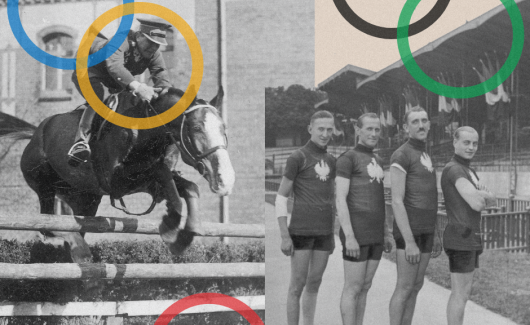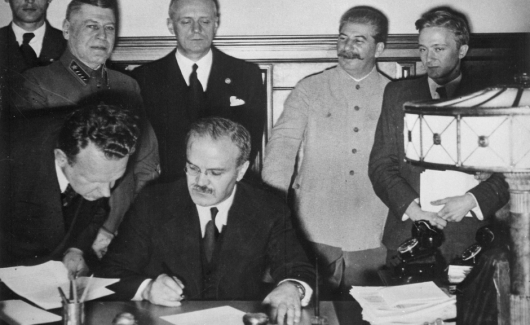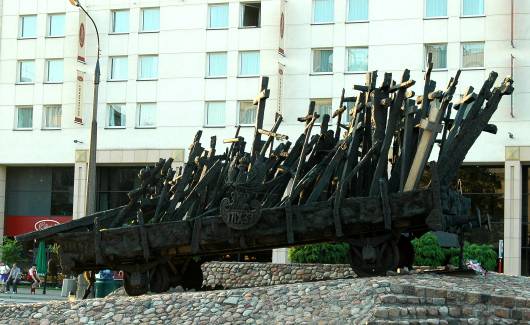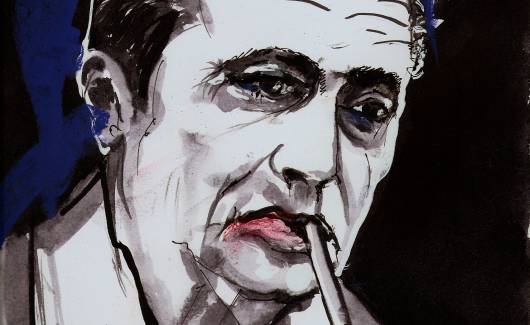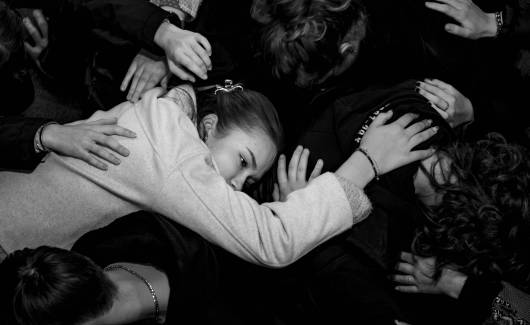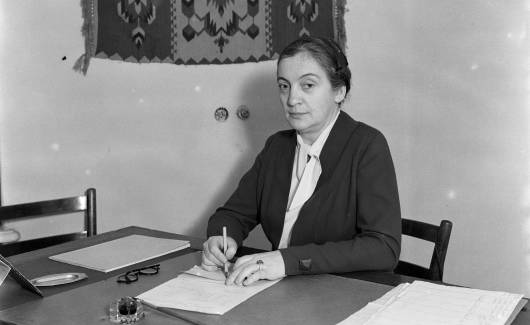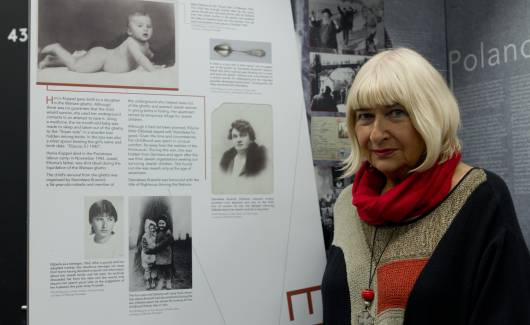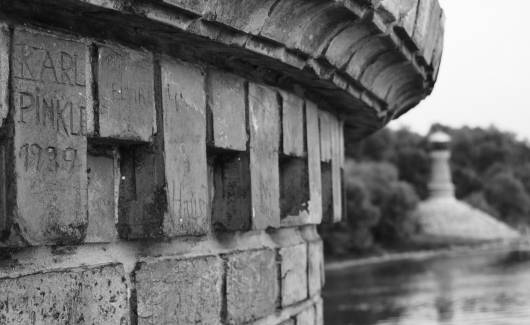As is well known, Poland suffered enormous human and material losses during the Second World War. These losses were relatively - i.e. in relation to the pre-war population - the largest in Europe. Moreover, the German Nazi occupation authorities embarked on a cruel and humiliating programme of degrading the Polish nation to the function of an uneducated workforce. This provoked widespread and strong Polish resistance during the war and, once it ended, condemnation, resentment and even hatred towards Germans in general, based on the largely correct conviction that a large part of German society supported Hitler’s regime. Of course, the generalisations presented here should not be taken literally, but as a characterisation of a certain dominant tendency.
In Germany, a certain section of society may not have known the horrifying facts about the occupation of Poland, while another section effectively pushed the tragic truth about it out of its consciousness. Under these conditions - especially in the western occupation zones, from which the Federal Republic of Germany was formed in 1949 - Poles came to be seen as the main culprits for the great misfortune of the German people, which was considered to be the loss of the eastern part of the former Germany and the displacement of the German population living there until then. German critics of Poland and the Poles did not want to understand that these territories were compensation for the even more extensive areas that the Soviet Union had taken from Poland, and not simple territorial spoils. Importantly, it was the Soviet leader Joseph Stalin who at the Big Three conference in Potsdam pushed through the course of the Polish western border and the displacement of the German population from Poland within the new borders.
This mutual antagonism was exploited by politics in both countries. In Poland, Stalin installed the rule of the communists, who were very unpopular among the Polish population and there was a partisan war against their rule in the country. One of the very few aspects of the reality of the time in which the positions of the communists and the Polish population appeared to agree was the hostility to the Germans and the conviction that Poland necessarily needed the territories taken from the Germans in order to rebuild and in the future develop. For this reason, the communists literally nurtured hostility to Germany and the Germans, as it was probably the most important factor at least partially legitimising their power in Poland.
On the other hand, in the Federal Republic of Germany - created by the decision of the Western occupying powers (the United States, Great Britain and France) after the beginning of the Cold War in 1949–1950 - recalling the alleged and actual guilt of Poles and hostility towards the Polish People’s Republic as an ally of the Soviets was politically very convenient, as it emphasised the pro-Western stance of this new German state and at the same time relegated the moral and legal reckoning with German Nazi crimes to the very background. In addition, certain provisions of the Potsdam Agreement of August 1945 allowed the West German side to claim that the actually existing Polish-German border on the Oder and Neisse rivers was not definitively established and therefore Germany still existed within the 1937 borders. This argumentation, as one can easily guess, caused much concern in Poland for the future of the country.
As we know, a communist state was created in the Soviet occupation zone of Germany in 1949 under the name of the German Democratic Republic. Despite their declared friendship, relations between communist Poland and communist East Germany were only seemingly correct. In 1950, East Germany, on the express orders of Moscow, signed a treaty with Poland on the recognition of the new border, but the two governments were still very distrustful of each other and competed fiercely for the favours of the Soviet hegemon.
Although the resentment and alienation prevailing between Poles and Germans was deep and almost universal, keen minds on both sides of the unrecognised border increasingly came to the conclusion that such a state of affairs must end one day and that the two large nations in the middle of Europe could not live with their backs turned to each other. In 1956, Władysław Gomułka, a politician described as a ‘national communist’, took power in Poland. Just after the war, he had been Minister for what was known as the Recovered Territories, as the communist propaganda named the territories taken from Germany, and well acquainted with the complexity of the situation of these territories. One of his important foreign policy goals was to have the Oder-Neisse border recognised by the Federal Republic of Germany. He was keen to do this because he wanted to weaken Moscow’s role as the sole protector of communist Poland and create more stable conditions for the country’s development than before. In the Federal Republic of Germany, its first Chancellor Konrad Adenauer had already made it his policy objective in the early 1950s to establish normal, correct relations with France, Israel and, precisely, Poland, as he saw in this an opportunity for Germany to return quickly to the ranks of respected members of the international community. While the normalisation of relations with France and Israel had indeed already taken place in the 1950s, progress in relations with Poland had to wait much longer. Despite confidential talks that had been ongoing since 1957 (Carlo Schmid, Berthold Beitz), their only achievements were an initial trade agreement and the opening of trade representations in each country in 1963.
Regardless of the politicians’ unsuccessful attempts, the late 1950s and early 1960s saw the emergence of tendencies in Germany, especially among the younger generation, to settle the Nazi past of German society. In the case of those following the Christian ethic, this led to the learning about and confession of guilt, as well as repentance and atonement. In 1958, the Evangelical youth organisation Aktion Sühnezeichen (Sign of Repentance Action) was founded in Germany, which dedicated itself to such simple but very meaningful activities outside Germany as working to clean up former crime scenes, mostly concentration camps, and caring for former prisoners who were sick and infirm. At the beginning of the 1960s, activists of the Christian churches in Germany began to increasingly convince German society to abandon the idea of revising the existing border with Poland and to seek understanding and reconciliation with the Poles. Information about the change of mood in Germany reached Poland, arousing more and more lively interest in the Catholic Church, a dominant force here. The most perspicacious among the Catholic clergy and intellectuals were aware that the hatred of Germans pouring profusely from the communist media and into the heads of children and young people at school, was profoundly immoral from a Christian point of view and further weakened the mental ties between Poles and the free democratic world.
In assessing the situation at the time, we must remember that the communist authorities in Poland harshly persecuted the Catholic Church, whose adherents were well over 80 per cent of Polish society until 1956. The Communists imprisoned many bishops and priests for years on trumped-up charges, made it difficult for Catholics to practise their religion and discriminated against them. The most notorious of the prisoners was the head of the Church in Poland, the Primate of Poland Cardinal Stefan Wyszyński. He was released from custody in 1956, at which time the repressions against the clergy and the faithful eased somewhat, but nevertheless relations between the communist state and the Catholic Church were still very tense.
Between 1962 and 1965, the Second Vatican Council took place in Rome, its aim being a profound modernisation of the Catholic Church. The participating Polish cardinals and bishops, who shared their experiences of coexistence between Church and state guided by an anti-religious ideology, made many contacts with representatives of other churches. They used them to invite bishops from all over the world to the great celebrations planned in 1966 for the Millennium, the 1,000th anniversary of the adoption of the Christian faith by the Polish ruler Prince Mieszko I and his state. On 18 November 1965, in the last days of the Council, a comprehensive letter signed by 36 top representatives of the Polish episcopate and containing such an invitation was handed over to the German bishops. The author of the letter was the Archbishop of Wrocław Bolesław Kominek, a clergyman who had grown up both in Polish and German culture. The concluding sentences of this document included the words:
In this most Christian, but also very human spirit, we extend to you, sitting here on the benches of the concluding Council, our hands and grant forgiveness as well as ask for it. And if you, German bishops ... fraternally embrace these outstretched hands, then only then will we be able to celebrate our Millennium in a most Christian manner with peace of conscience.
The words we grant forgiveness, as well as ask for it[1] have become the foundation of German-Polish reconciliation and a leitmotif of many other reconciliation processes. Today, these words can be found on the author’s memorial and commemorated in dozens of different ways.
The reply of the German episcopate sent on 5 December 1965 was polite and diplomatic, but completely in line with the formal legal position of the Federal Republic of Germany towards Poland. It also did not contain such an emotional plea for forgiveness, which - on the face of it - marked the failure of the Polish bishops’ initiative. A few days later, the communist authorities in Poland unleashed a violent propaganda campaign against the Church and the signatories of the letter. The bishops were accused of violating the government’s exclusive competence in foreign policy and of betraying the Polish raison d’état by addressing the Germans with these words. Communist Party chief Gomółka was so furious with the bishops that he seriously considered arresting them or deporting them from Poland to the Vatican. Questions were raised about who had given them the right to forgive the Germans and what the Poles were supposed to apologise to them for. A major problem was that the content of the letter to the German bishops also came as a surprise to Polish Catholics, and criticism of this act of forgiveness was voiced in many Catholic milieus.
Over the next few months, however, the bishops successfully convinced Catholics in Poland that, twenty years after the war, a religious and moral act of forgiveness was necessary and imperative. In time, the communist campaign against the authors of the letter also weakened, as it turned out that this appeal had nevertheless been noticed in West Germany and had become an impulse to increasingly seek dialogue with the Poles. Moreover, in December 1966, a government was formed in the Federal Republic of Germany, with the Social Democrat Willy Brandt as Foreign Minister and Deputy Chancellor, who began to implement a plan for what is known as Ostpolitik (eastern policy), whose motto was Wandel durch Annäherung (change through rapprochement). This policy was to lead to the establishment and expansion of relations with the Soviet Union and the countries of the Soviet bloc, including Poland in particular. In October 1969, Willy Brandt became Chancellor and a year later visited Poland, where he signed a treaty for the normalisation of relations with Poland, the most important part of which was the recognition of the Oder-Neisse border as Poland’s western border and the declaration of the renunciation of all mutual territorial claims. On the same day, the German Chancellor made an unexpected gesture that became a true icon of reconciliation. Laying a wreath at the Monument to the Ghetto Heroes in Warsaw, he knelt in humility.
It was proof to the Germans themselves, to the Poles and to many observers around the world that a fundamental mental change had taken place in Germany, which on the German side opened the way to reconciliation. The agreement between the People’s Republic of Poland and the Federal Republic opened a new stage in Polish-German relations. In 1972 the German-Polish Textbook Commission was established, which exists to this day, with the task of issuing joint recommendations to authors of history textbooks in both countries on how - taking into account the latest state of scientific research - to present the history of German-Polish relations. It is worth mentioning that a team of authors working under the aegis of the Textbook Commission has since 2008 produced a set of secondary school history textbooks which are identical in content in the German and Polish versions. Thanks to the work of the German-Polish Textbook Commission, which has been going on for half a century, and the intensive scientific contacts between historians from both countries, which also began in the 1970s, the old academic disputes about the history of German-Polish relations have been resolved together. This is by no means to say that the common past is not a source of sometimes sharp disputes and tensions, but their cause is nowadays basically only the way the past is commemorated and not the historical facts. The former is the domain of politicians, the latter of historians.
In the 1970s, intensive German-Polish economic cooperation developed. It was driven by West German loans, which were large by the standards of the time, and were intended to bring about a modernisation leap in Poland, which had suffered from deep economic and technological backwardness in the previous decades. These intentions, implemented under the conditions of the communist planned economy, failed. In the course of time, it became apparent that the increasingly intensive contacts between the two societies, the tourist trips in both directions, the temporary work of Poles in Germany, the emerging city partnerships, cultural exchanges, etc., were of far greater importance. It should not be imagined that these contacts were as intensive and uncomplicated as they are today between friendly countries, but they were fundamentally different from what was possible in the Soviet Union and other communist countries.
One of the most spectacular successes of the then stage of German-Polish cooperation, with virtually all the hallmarks of reconciliation between the churches, was the election of the Polish Cardinal Karol Wojtyła as Pope, i.e. head of the worldwide Catholic Church, in 1978. Under the name John Paul II, he became one of the most recognisable and popular figures in the world at that time. Years later, it became clear that this election was mainly due to the very active support given to the Polish cardinal by the German members of the College of Cardinals.
At the same time, among the numerous illegal opposition organisations working in Poland for the reform or outright overthrow of communism, a clandestine think-tank called the Polish Independence Alliance emerged. It published expert reports on various aspects of Polish politics outside state control. This group published two texts on Polish-German relations. They concluded that an authentic and partnership-like Polish-German understanding was a necessary condition for Poland to liberate itself from Soviet hegemony and overthrow communism, for if Poles and Germans gained trust in each other and reconciled, any justification for Soviet guarantees of the territorial status quo in Poland would disappear. Moreover, expert reports by the secret think-tank concluded that the division of Germany into two states was completely unnatural and harmful to Poland, as the communist German Democratic Republic walled Poland off from Western Europe. Therefore, any steps leading to the reunification of this country by the Federal Republic of Germany should be supported. Such ideas went virtually unnoticed in West Germany, but their compelling logic had since become a permanent component of the geopolitical thought of the Polish anti-communist opposition.
In the summer of 1980, i.e. not long after the election of Pope John Paul II, the non-communist Independent and Self-Governing Trade Union Solidarity was established in Poland, which was in the midst of a severe economic crisis, after a huge wave of strikes, soon having nine million members. This huge peaceful political force attempted a radical democratisation of Poland, which the communists saw as a threat to their rule. On 13 December 1981, General Wojciech Jaruzelski’s government imposed martial law, and the police and army arrested more than 10,000 Solidarity activists. A communist military dictatorship took power in Poland for several years, and a political and humanitarian crisis engulfed the country. West Germany’s attitude to these events in Poland was complicated, as the government of the Federal Republic, which had so far achieved much success with its change-through-rapprochement policy towards the Polish communists, was very reluctant towards the Solidarity Trade Union, as it disturbed - as it was believed in Bonn - this apparent harmony. For this reason, Solidarity as an organisation received hardly any support from the West German authorities. The attitude of German society was different. The powerful, spontaneous social movement, which courageously strove to democratise and expand the sphere of freedom in its homeland, aroused widespread support there. For this reason, in order to alleviate the consequences of the crisis in Poland manifesting itself in dramatic shortages of food, medicine and clothing, a massive campaign was organised in Germany to send parcels of food, medicine, baby food and clothing to Poland. This aid, going directly from individual German donors to Polish families or distributed by church structures, reached millions of Poles for several critical years. In the eyes of the Poles, this great aid campaign became visible proof to everyone that the Germans as a nation had changed and had now become friends who could be counted on in times of need. This was another foundation of the reconciliation process.
In the following years, the crisis of the communist state and the loss of credibility of its leaders was so great that in the spring of 1989 they decided to share power and responsibility for the state with the opposition and agreed to almost entirely democratic elections. In these elections (held on 4 June 1989), they suffered a crushing defeat and the first non-communist government in the entire Soviet bloc was soon formed under the leadership of Tadeusz Mazowiecki. The first foreign leader to visit the new Polish government was German Chancellor Helmut Kohl. It was a very special visit, as on its very first day, 9 November 1989, the infamous wall that had divided Berlin during the Cold War came down, marking the fall of the communist German Democratic Republic and opening up the prospect of German reunification. On 12 November 1989, during the remainder of Kohl’s visit to Poland, a ‘Reconciliation Mass’ took place in Krzyżowa in Silesia, where German opposition to Hitler had been active during the Second World War. During this political as well as religious ceremony, Polish Prime Minister Mazowiecki and the German Chancellor embraced each other, passing on the ‘sign of peace’ to each other. The news and photographs documenting this event became another symbol that spoke of progressive reconciliation.
As I mentioned, Poland had a positive attitude towards the expected German reunification. However, that process, according to the letter of the Potsdam Agreement of 1945, once again (this time for the last time) opened up the question of recognition of the Polish western border, which caused serious anxiety on the Polish side. This anxiety was not unfounded, as Chancellor Helmut Kohl, motivated by domestic political considerations, was for an exceptionally long time dragging his feet as regards deciding exactly how this recognition of the border with Poland was to take place. It was finally decided on 17 July 1990, during negotiations between the Foreign Ministers of the two German states, the four former occupying powers and the Polish Foreign Minister, who had been invited for this purpose.
The agreement on the definitive recognition of the German-Polish border itself was signed on 14 November 1990, and less than a year later a comprehensive agreement on good neighbourly and friendly cooperation between the two countries was concluded.
These pacts formed a very convenient basis for the development of cooperation. From the point of view of the reconciliation process between the two societies, the creation of a strong organisation called the German-Polish Youth Cooperation was of particular importance. Its task is to organise and co-finance exchanges of schoolchildren and university students, school partnerships, joint workshops, etc., all with the aim of getting the younger generation from both countries to know each other, which should then lead to their cooperation in adulthood as a matter of course. To date, more than three million participants have taken part in Youth Cooperation programmes. Thousands of city, municipal, county and regional partnerships were (and still are) established in the 1990s with a similar objective in mind. In the same period, the number of mixed German-Polish marriages skyrocketed and Polish women are still the most frequently married foreigners. In conclusion, one can venture to say that the 1990s saw a complete normalisation of German-Polish relations in the sphere of interpersonal and social relations, which can probably be described as reconciliation. And this state of affairs has proved to be permanent.
Harmonised with these overwhelmingly positive trends were the joint political actions of both countries. A strategic goal of Polish foreign policy, vigorously supported by Germany, was Poland’s membership of the European Union, opening up the fastest possible path to modernisation, as well as that of the North Atlantic Treaty Organisation (NATO), giving the country the best possible guarantee of security. Both of these goals were also in the interest of a reunified Germany, if only because of the opening up of the Polish market and Germany’s participation in Poland’s modernisation. At the same time, after Poland’s entry into NATO in 1999, Germany ceased to be a frontline state and gained considerable strategic depth. Consequently, one began to speak of the 1990s as a period of Polish-German ‘community of interest’.
This period essentially came to an end at the beginning of the 2000s. Incidentally, already in 1994 the German political scientist and publicist working in Poland, Klaus Bachmann, described Polish-German relations as ‘kitschy reconciliation’. He argued that, in order to achieve primary political goals, both countries avoided debate on contentious and controversial issues, thus distorting the true picture of mutual relations. In 2002, the first major friction in Polish-German relations occurred on the occasion of the Polish army’s decision to purchase American F-16 fighter jets, rather than French or Swedish aircraft as the Germans had expected. At the same time, Poland and Germany took a completely different stance on the US-Iraq conflict and the Second Gulf War. Poland demonstrably supported Washington’s plans and later even took a large occupation zone in Iraq, while Germany, together with France, Russia and China, refused to participate in this war and support the Americans. This was the first time in history that the Federal Republic of Germany overtly countered its hitherto major ally. Meanwhile, the Poles watched with growing concern Germany’s security policy, which boiled down to a rapid reduction in the size of its army and military expenditure, and the policy of the European Union, which showed a tragic helplessness towards the war in the former Yugoslavia.
At the same time, Vladimir Putin had been president in Russia since 1999, and already the first years of his rule indicated that authoritarianism and imperial tendencies were gradually resurfacing in Russia, which in principle necessarily led Poland to seek a rapprochement with the strongest NATO state, i.e. the United States, as the only real ‘donor’ of security in this part of the world.
The author of this shift in German policy was, as is well known, Chancellor Gerhard Schröder, in power since 1998. He became an advocate of the notion that a partnership with Russia was of key importance to European security, and of the idea, shared with the French, of creating a ‘European power’ (Europäische Großmacht) as an independent player in world politics: independent and thus contesting the current position of the USA. One effect of Germany’s adoption of this vision of international relations was that it ignored warning signals concerning Russia and - above all - willingly joined in the construction of the Nord Stream 1 gas pipeline, which runs along the bottom of the Baltic Sea from Russia directly to Germany, thus bypassing all the countries lying between Russia and Germany. With Germany’s help, Russia gained the possibility to use gas blackmail against Ukraine, Belarus, the Baltic states, Poland, Slovakia, the Czech Republic and Hungary. Germany, in turn, obtained large supplies of Russian natural gas at preferential prices. In Berlin, it was imagined that this would soon allow a profitable redistribution of this raw material in many European countries and, in addition, provide the German economy - already the strongest in Europe - with an additional competitive advantage, guaranteeing its position as an economic hegemon in the European Union. Germany has rejected all criticism of this pipeline, and has also torpedoed the idea of a European energy union, whereby the Union would buy gas for all its Member States and distribute it according to jointly accepted criteria.
As we know, Gerhard Schröder lost power in 2005 and, three weeks after leaving office as Chancellor, became Chairman of the Supervisory Board of the Russian gas giant Gazprom. He thus discredited himself in the eyes of the public, but the German Government, led from then until last year by Angela Merkel, did not give up its strategic plan, supporting the construction of Nord Stream 2 after Nord Stream 1. Added to this was the plan pushed by Germany for the ecological transformation of the EU economy. This generally noble plan, however, assumed until this summer that natural gas would soon be the only accepted transition fuel in Europe until the ‘universal happiness’ of a carbon-free economy was achieved. Nuclear power was condemned in these plans, and the use of coal as a fuel and fracking of natural gas banned. In this way, the German-Russian gas plans gained even greater economic and strategic importance. It was not until Russia’s unlawful aggression against Ukraine in February this year and the cruel war that continues to this day that it became clear how misguided and dangerous these plans were for Germany itself and for Europe as a whole.
In the early 2000s, unexpectedly for the Poles, there was a tendency in Germany to highlight the German victims of the Second World War. This included the victims of Allied bombing in Germany and, for example, the victims of the Soviet army atrocities that occurred during the conquest of Germany. Most important, however, was the movement for the creation of the Centre against Expulsions, a modern memorial to the territories lost to Poland in eastern Germany, and above all to the hard and often tragic fate of the German population forcibly displaced from there. This was accompanied by demands for compensation to be paid to the displaced Germans and their descendants for property lost to Poland. It should be emphasised here that the forced migration of the German population after the Second World War was no taboo in either Germany or Poland up until that time. A great deal of research was done on the subject, including much conducted jointly by German and Polish historians, many books were published and several films made. However, from the 1960s onwards this subject was rarely present in the German cultural mainstream and it seemed that this aspect of the past was beginning to be treated in Germany as a closed page of history rather than something that could capture the memory and imagination of contemporary Germans.
Incidentally, Poland of the 1980s and 1990s also experienced a similar process of historicisation, symptomatic of which was a regression of interest in the history of the German occupation of Poland and the crimes committed at that time. Thus, the surprise of Polish politicians and public opinion at the change in German remembrance policy was great. In Poland, people began to suspect that - as it was said at the time - the Germans now wanted to rewrite the history of the Second World War. Meanwhile, the existing consensus between Poles and Germans on such elementary questions as who was to blame for the outbreak of war, who pursued a criminal and genocidal policy and towards whom, and who bore responsibility for it and why, was (and is) seen as the most important basis for reconciliation and good relations with Germany. Observing the developments at the time, many Poles thought that this whole mental and political construction would soon collapse. Even the first dangerous political moves were already made: when the German authorities gave preliminary support to the idea of building a Centre against Expulsions and did not distance themselves from demands for compensation for German property lost on Polish territories, the Polish Sejm passed a resolution in 2004 stating (truthfully) that Poland had not yet received reparations for the damage caused in Poland during the Second World War, and that the Parliament was therefore calling on the Polish Government to determine the amount of these losses.
This development, which threatened a serious crisis in mutual relations, alarmed people of goodwill in both countries, who managed to stop it. The German Government declared that it would never support private German demands for compensation against Poland and, moreover, did not allow the establishment of the Centre against Expulsions in the form initially planned. The institution documenting and commemorating the forced migration of Germans from Central and Eastern Europe was opened to the public in Berlin last year under a different name. The permanent exhibition presented there is very factual and objective in its content and does not reflect any accusations against Poland. In Berlin, there are plans to create a Memorial and Meeting Place for Poland, dedicated to the history of the German occupation in Poland.
In Poland, on the other hand, nothing has been done to impede the activities of the countless German-Polish NGOs, partnerships between towns and regions, joint scientific programmes and the like, which have mushroomed since 1989. They all form a highly resilient and durable tissue that cushions most of the negative impacts generated by current politics, eliminating, or at least delaying, their impact on public awareness. Consistent with this picture is the fact that the work on establishing the amount of reparations that Poland could demand from Germany took as long as eighteen years and ended with the publication of the first part of this document literally ten days ago, but it is not certain that the Polish side will ever use these findings to formally demand reparations from Germany. This does not change the fact that the temperature of Polish-German relations has dropped quite markedly after 2000 and both sides have had to abandon many exaggerated expectations of a reconciliation process that probably needs much more time than we expected.
